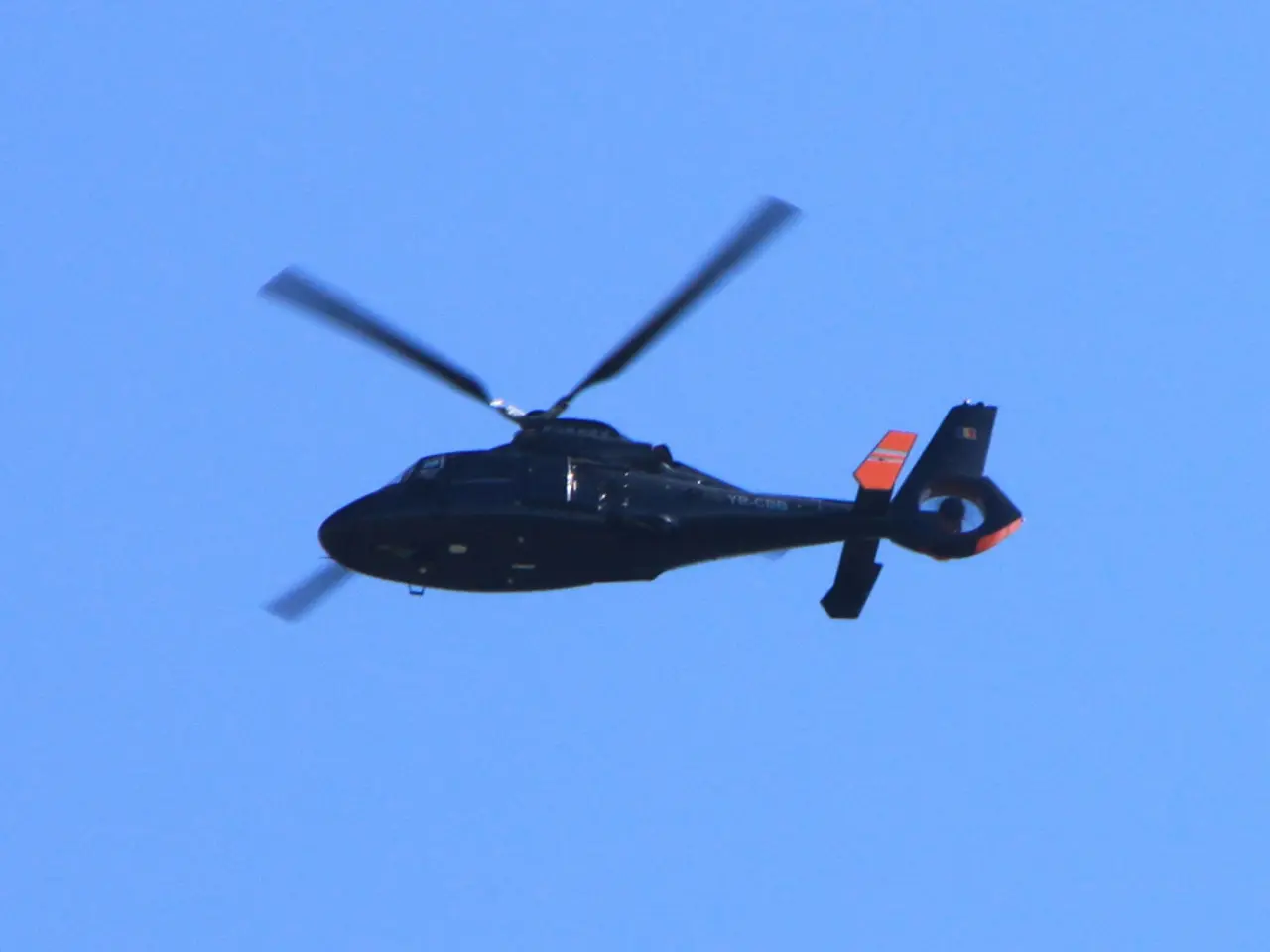Airbus H145 helicopters to be acquired by HTM for offshore wind farm operations
The Airbus H145 helicopter, known for its low CO2 emissions and innovative features, has secured a new order from HTM Helicopters. This expansion of HTM's fleet will see the addition of one H145 helicopter, bringing their total to 19 helicopters, with options for two more of the same type.
HTM Helicopters, a leading player in the offshore wind industry, will utilise the new H145 for offshore missions, particularly in transporting technicians and materials to wind farm turbines off the coasts of Germany and France. The H145's attributes, such as its twin Safran Arriel 2E engines delivering enhanced power and fuel efficiency, and its five-bladed main rotor system that increases useful load by 150 kg, make it an ideal choice for such operations.
The H145's modern avionics, including a high-performance 4-axis autopilot, also contribute to its suitability for offshore wind operations. These advanced systems enhance situational awareness, crucial for operating in complex offshore conditions. Additionally, the H145's enclosed Fenestron tail rotor and its status as the quietest helicopter in its class, with a particularly low acoustic footprint, are beneficial for reducing environmental impact around sensitive offshore sites.
Bernd Brucherseifer, Managing Director for HTM Helicopters, expressed his satisfaction with the H145, stating that it offers excellent performance, quick role changes, reliability, and ease of maintenance for offshore wind operations. Axel Humpert, Senior Vice President and Head of the H145 Programme at Airbus, echoed this sentiment, stating that the H145 is ideally suited for offshore wind operations due to its capacity for transporting passengers and cargo, and outstanding hover performance for hoisting operations.
HTM Helicopters made history in 2021 when they became the first operator to take delivery of a five-bladed H145 for offshore wind operations. This new order further solidifies their commitment to the H145 and Airbus helicopters, as they continue to expand their fleet and contribute to the growth of the offshore wind operations market.
The H145's success is not limited to HTM Helicopters. Worldwide, there are over 1,675 H145 family helicopters in service, totalling over 7.6 million flight hours. The H145's combination of modern technology, payload capacity, safety features, and environmental standards continues to make it a popular choice in various demanding sectors, including offshore wind operations.
In late 2023, HTM's aircraft was used in a world-premiere trial led by Airbus to hoist crew members into the nacelles of floating wind turbines in Hywind Tampen. This trial underscores the H145's versatility and its potential to shape the future of offshore wind operations.
With the growing demand for offshore wind operations in the near future, it is clear that the Airbus H145 helicopter will continue to play a significant role in this sector, thanks to its innovative design, reliable performance, and commitment to reducing environmental impact.
- HTM Helicopters, with their increased fleet of Airbus H145 helicopters, will continue to invest in renewable-energy sector, specifically the offshore wind industry, furthering the growth of the industry with their commitment to sustainable technology.
- Given the expanding offshore wind industry and the need for reliable, efficient, and eco-friendly solutions, the finance sector could consider the Airbus H145 as a viable option for investments in renewable-energy technology, recognizing its significant contributions in reducing carbon emissions and enhancing operational capabilities.




